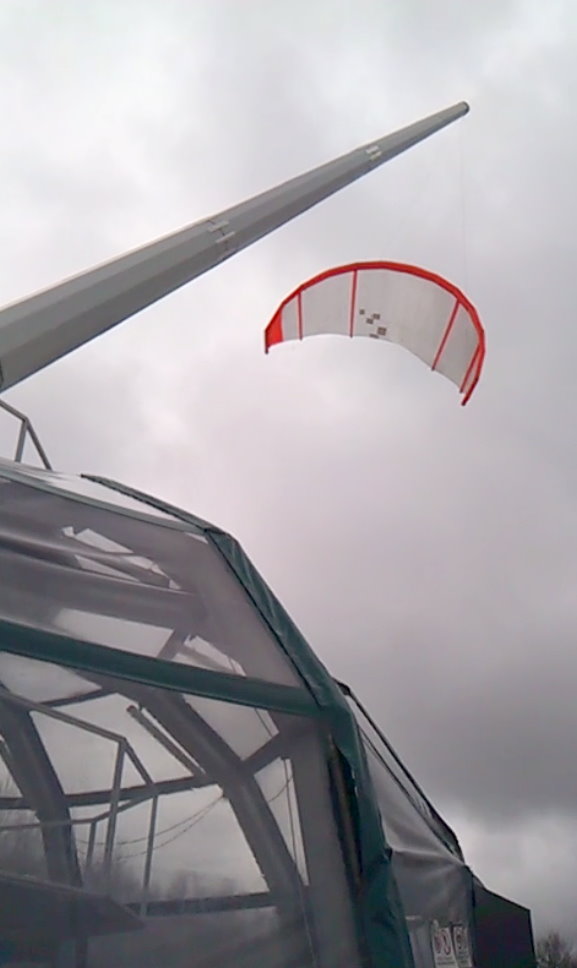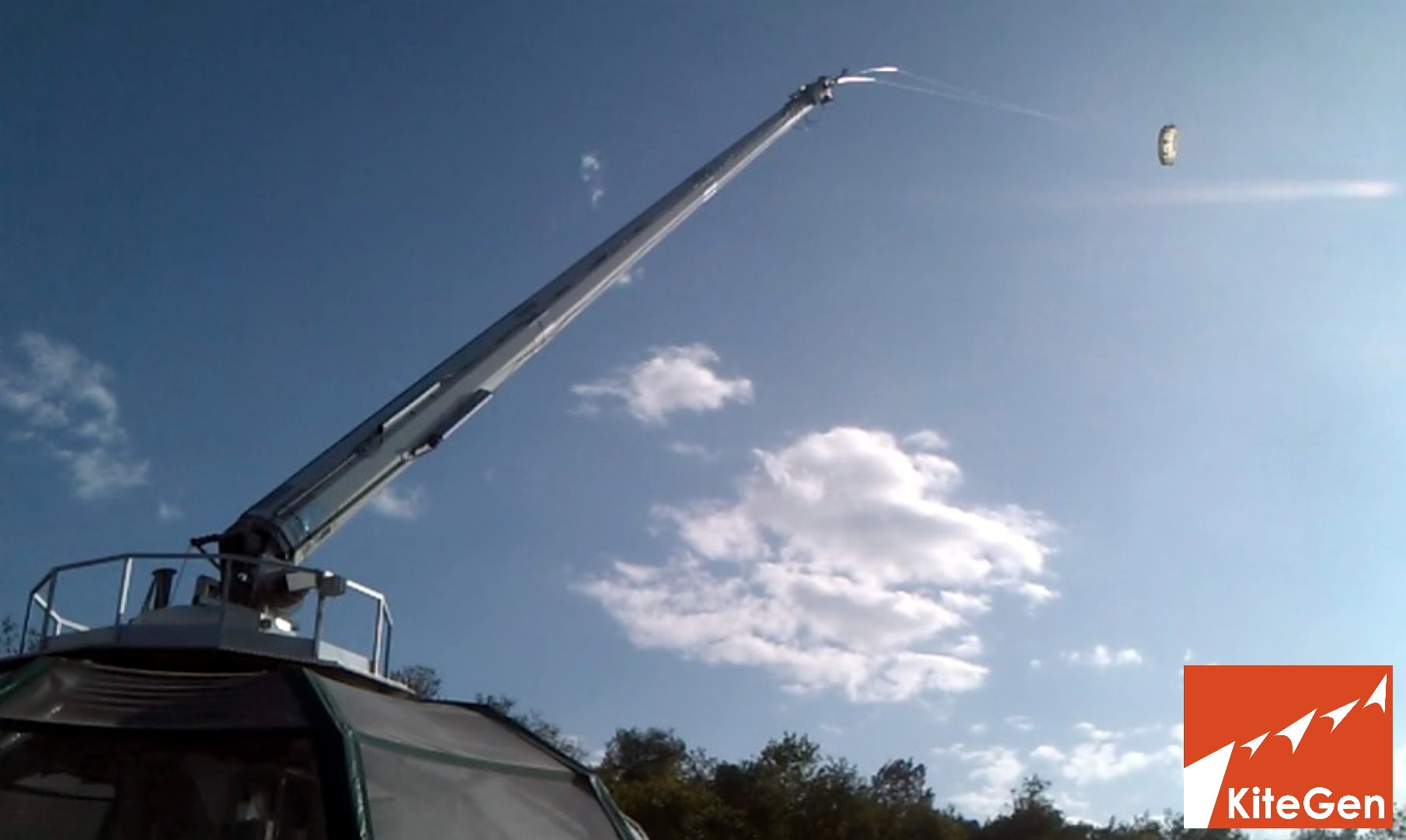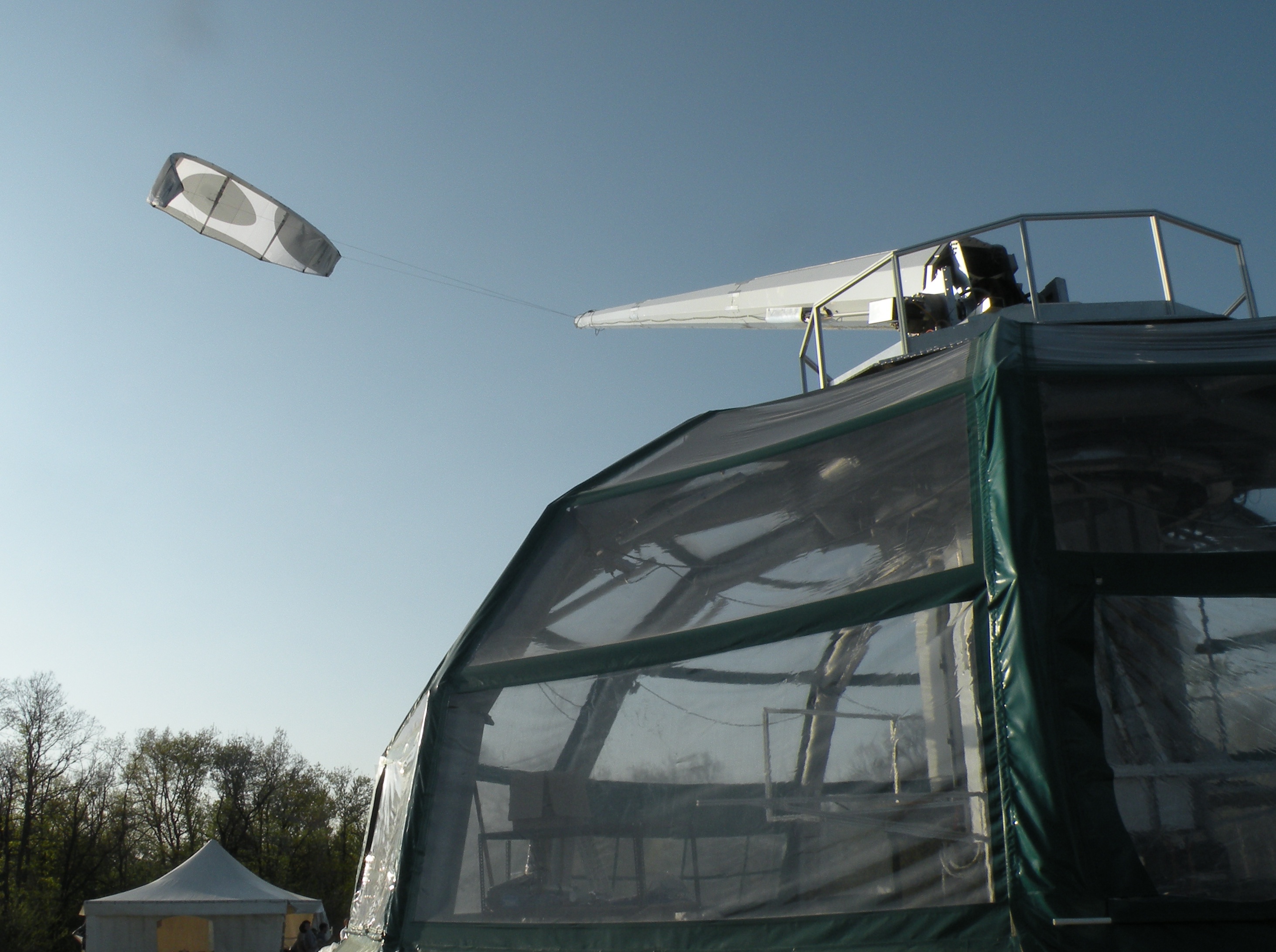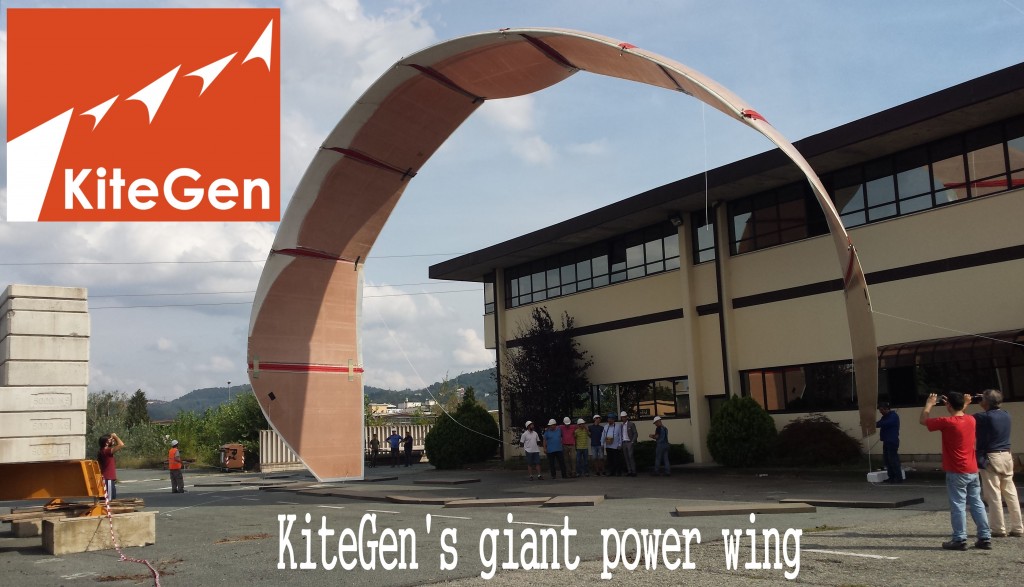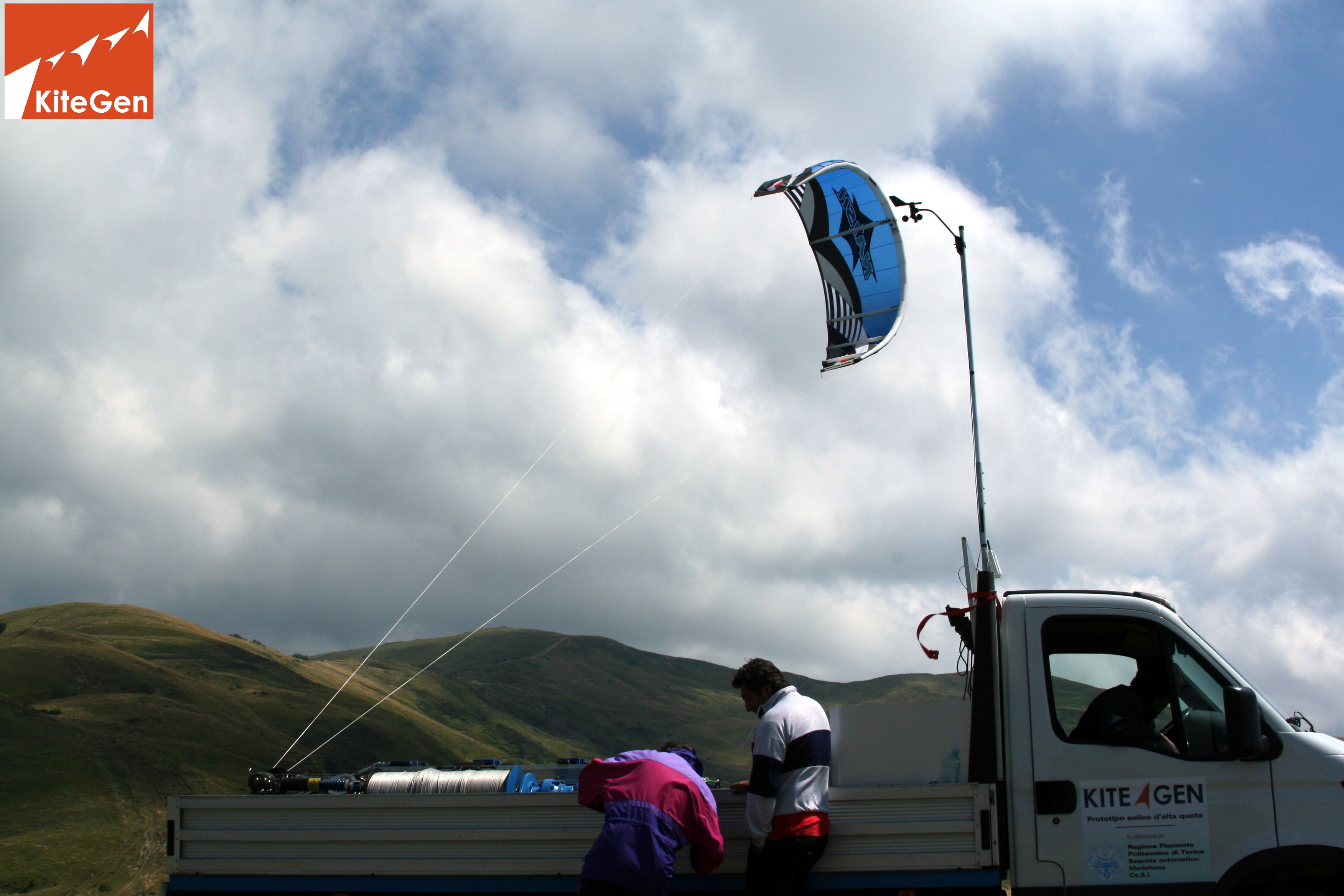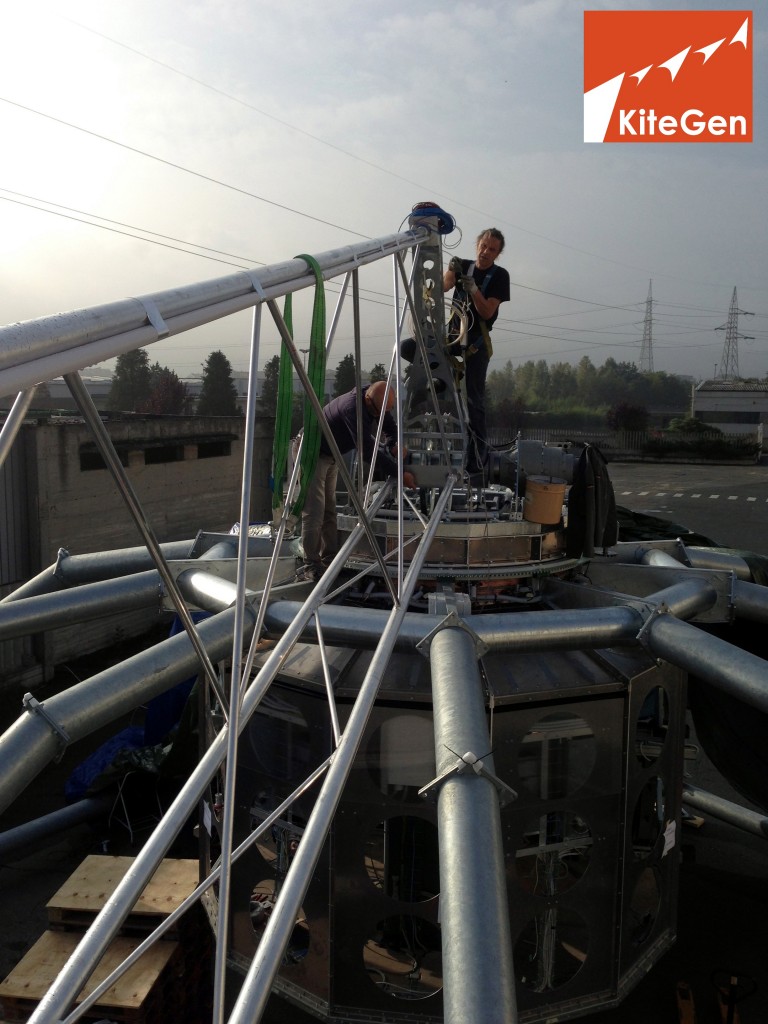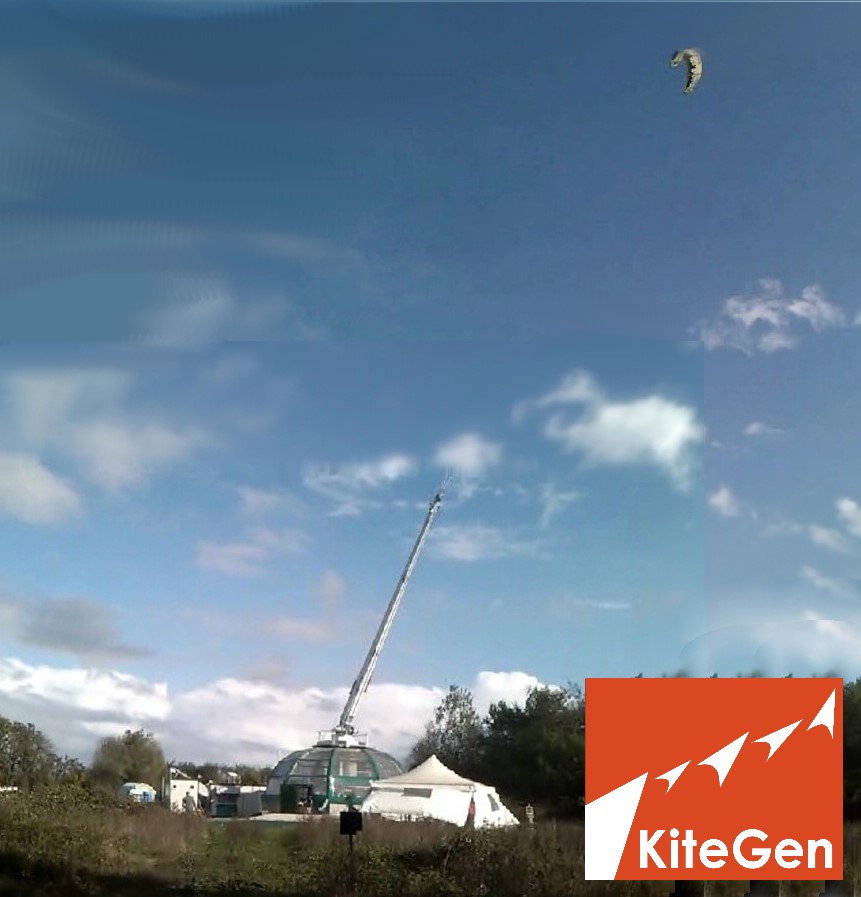Details
A radical change of perspective
KiteGen is pioneering a revolution on how to produce clean energy from wind, with the aim not only to compete within the current wind industry but, as still too rarely happens with renewable sources, to move the battlefield into the territory of fossil fuels.
Today’s technology is just capable of scratching the surface, in few favourable points, of the enormous energy field contained into the wind (see Wind data). Wind turbines cannot reach higher and touch altitude wind, they are already close to their dimensional limits: difficultly hubs can be positioned at more than 100 m above the ground, the holding structure grows exponentially heavier, more unstable and above all more expensive with the height.
This situation may be compared with what happened in oil drilling, where only after having found better and better solutions it was possible to move away from the ground – downwards, in this case – and to reach the deepest and most profitable fields. To help visualizing the existing unexploited potential, just consider that the flight prohibited area over a nuclear power plant can easily get to contain 1 GW of wind power, equal to the power of the plant itself.
To reach altitude wind and exploiting its higher kinetic energy, the KiteGen project starts from a radical change of perspective: no longer heavy and static plants like current wind turbines, but instead light, dynamic and intelligent ones. In the air, to subtract energy from the wind at an altitude of 800 / 1,000 m, power kites, semi-rigid automatically piloted high efficiency air foils. On the ground, all the heavy machinery for power generation. To connect the two systems, high resistance lines transmitting the traction of the kites and at the same time controlling their direction and angle to the wind.
A clear advantage of this technology is visually suggested in the illustration below. The essence of the KiteGen concept is comparable with a wind turbine, whose most efficient part are the wing tips – in red – where the highest speeds are reached; but only the truly needed components remain, high speed wings and the generator, the latter conveniently moved to the ground. The resulting structure, base foundation included, is much lighter and cheaper. Moreover the operative height can be adjusted according to wind conditions.

The KiteGen power plant
The KSU (Kite Steering Unit) is the unit that allows to automatically pilot a power kite or an array of power kites over a predefined flight path (see prototype video). The power kite is manouvered by differentially unrolling and recovering the two lines on two winches controlled by engines.
Each KiteGen power plant is composed by several KSUs pulled by the power kites along a ring-shape circular path at ground level. At the very core of the project stays the software that, receiving data also from on-board avionic sensors (see sensors video), autonomously pilots the power kites, so that their flight patterns can be controlled, synchronized and normally directed to maximise the production of energy.
With such configuration, a single KiteGen power plant is able to intercept very large amounts of altitude wind. In the illustration below, concerning the Kite Generator in the “Carousel” configuration, is shown the area swept by a plant with a circular path of 800 m diameter: the same quantity can be reached by approx. 150 latest generation wind turbines. It has to be noted that wind turbines need to be spaced to avoid shading one another and decreasing the total yield, so these would require a territory of more than 40 Km². The KiteGen power plant, a safe area around included, uses approx. 5 Km².
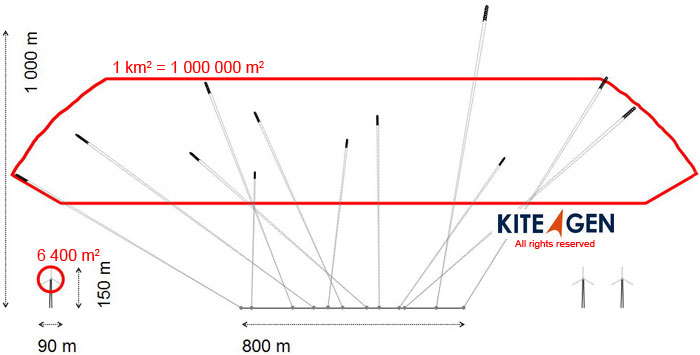
Energy production takes place in a distributed manner at each unit, thus avoiding unmanageable sizes of the electrical equipment.
The modular approach makes possible to build very powerful KiteGen plants, where as the diameter at ground level of the circular path grows, the area swept increases to the square and therefore the total wind power. 100 MW KiteGen power plants, not much larger than the illustrated example, diameter at ground level of the circular path of approx. 1,000 m, are estimated to deliver a cost of energy produced lower than 0.03 Euro per kWh. This value is bound to be further enhanced, since 1 000 MW (1 GW) plants are under study (see Future scenarios).
In the “Stem” configuration too is possible to reach big amount of generated power, through “wind farm” made of several generators, each of them much closer to the other than it is actually possible to traditional wind mills.
Scientific papers
- Power kites for wind energy generation: fast predictive control of tethered airfoils – IEEE Control Systems Magazine, December 2007;
- KiteGen project: control as key technology for a quantum leap in wind energy generators – 2007 American Control Conference, July 11-13, 2007 – New York City, NY, USA;
- Control of tethered airfoils for a new class of wind energy generator – 45th IEEE Conference on Decision and Control, December 13-15, 2006 – San Diego, CA, USA.
Future scenarios
Given a fixed optimal aspect ratio of the plant, as the diameter of the circular path at ground level grows, the area swept by the power kites increases to the square, reaching also higher and more powerful winds. Such exponential growth of the total wind power that can be harnessed is the main reason behind building bigger KiteGen power plants.
And due to the inner modularity of the technology, that foresees the multiplication of single steering units producing energy on a larger circular path, the scalability of the KiteGen power plants comes without significant structural and cost constraints. In a way, the difficulty in growing the size of a plant can be compared to what it takes, having built an automobile, to build a long line of the same automobiles.
This is the reason why 1,000 MW (1 GW) and larger KiteGen plants are studied, where the aim is not just increasingly cheaper cost of energy produced, but providing a solution to effectively reach (a not only dream of) a global energy mix where a consistent part of the baseload comes from clean, renewable source: tropospheric wind.
It would be like installing thousands of current wind turbines into the same site, something impossible because of the surface spacing needed to maintain a sufficent efficiency. KiteGen power plants overcome this limit, each unit exploiting different regions of the huge volume of wind swept by the whole machine.
It has to be added that, in scaling up the dimensions of the plant, one key technology that Kite Gen Research plans to explore is the conversion of mechanical energy into electrical energy through linear magnetic engines in a reversible fashion.
The theoretical boundaries of such configuration appears to be a ring of approx. 25 km diameter, very similar to a railway bridge, which is the base, or technically the stator, on which rotates a mag lev KiteGen; the tethered high power kites fly automatically at up to 10 km height in a controlled formation, generating a power of more than 60 GW. Right now, however, is deemed that opportunity evaluations will probably suggest to consider power plants of smaller dimensions.
